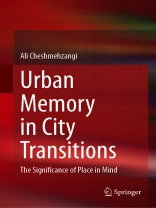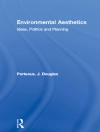As a continuation of ‘Identity of Cities and City of Identities’, this book covers the arguments around the memory-experience-cognition nexus concerning palimpsests and urban places. As cities experience transitional phases of growth, development, decline, and decay, the author urges considering the notion of urban memory in place-making strategies and design decision-making processes. These explorations would add value to primary fields of architecture, architectural history, cognitive science, human geography, and urbanism.
Divided into eight chapters, this book puts together a comprehensive knowledge of urban memory in city transitions. By studying urban memory, the author delves into conceptions of mental mapping, knowledge of environments, cognition of places, and the perceptual dimension of urbanism. Undoubtedly, urban memory plays a significant part in the future movements of humanistic urbanism. Given the significances of scale, pace, and mode of city transitions globally, we should remember who are the ultimate users of those living environments. Therefore, in this book, the author debates two contradictions of ‘memory of place vs. place of memory’, and ‘significance of place vs. place of significance’. Each of these is believed to be a paradox of its own, indicating places are significant through the systematic networks of cities, memories are meaningful through the neural information processing, and place memories are the essence of urban identities.
The book’s ultimate goal is to demonstrate the effectiveness of the space-time frame of place in making memorable places. Through the comprehensive explorations of many global examples, we can evaluate the significance of place in mind more carefully. This is narrated based on the recognition of nostalgia in cities, socio-temporal qualities in places, and the network of processes in our minds. In return, the aim is to provide new knowledge to make memorable cities, enhance social experiences, and capture and value the significance of place in mind.
Tabla de materias
Urban Memory: Cognition, Signs, Symbols, Identity, and Beyond.- Memory and Cities: Discovering Transitions through Urban Maps.- The Significance of Place in Mind: Comprehending Memory through Urban Places.- Urban Memory, Experiences, and Palimpsests: The Continuity and Discontinuity of Places.- Capturing the Realities of Experience.- Reproducing the Perception of Place.- Remembering through Naming and Palimpsests.- Recording Urban Memory in City Transitions.
Sobre el autor
Ali Cheshmehzangi is a Full Professor of Architecture and Urban Design with a Ph.D. Degree in Architecture and Urban Design, a Masters Degree in Urban Design, a Graduate Certificate in Professional Studies in Architecture, and a Bachelor Degree in Architecture. He is an urbanist and urban designer by profession and by heart. He studies cities and city transitions, sustainable urbanism, and integrated urban design strategies. Ali is Head of the Department of Architecture and Built Environment, Director of the Centre for Sustainable Energy Technologies (CSET), and Director of Urban Innovation Lab at the University of Nottingham Ningbo China. He is also a Specially-Appointed Professor at Hiroshima University, Japan. More recently, he works on two research projects on ‘Integrated Urban Modelling Framework’, and ‘ICT-based smart technologies for resilient cities’. Some of his previous projects are: ‘smart eco-cities in China and Europe’, ‘low-carbon town planning in China’, ‘green infrastructure of cities’, ‘nature-based solutions in China’, ‘toolkit for resilient cities’, ‘sponge city program’ and ‘green development in China’, ‘low carbon and climate-resilient planning’, and other urban transition studies. So far, Ali has +85 published journal papers and six other published books, titled ‘Designing Cooler Cities’ (2017), the award-winning ‘Eco-development in China’ (2018), ‘Sustainable Urban Development in the Age of Climate Change’ (2019), ‘Identity of Cities and City of Identities’ (2020), ‘The City in Need’ (2020), and ‘Sustainable Urbanism in China’ (2021).












